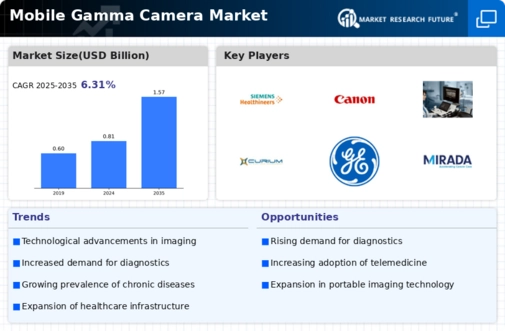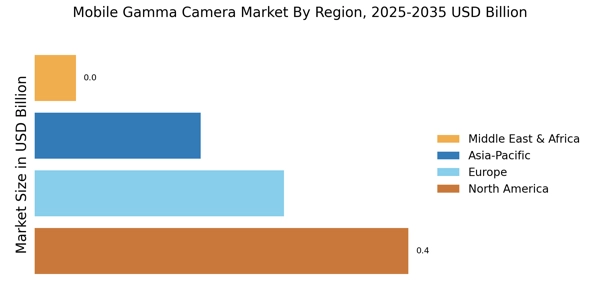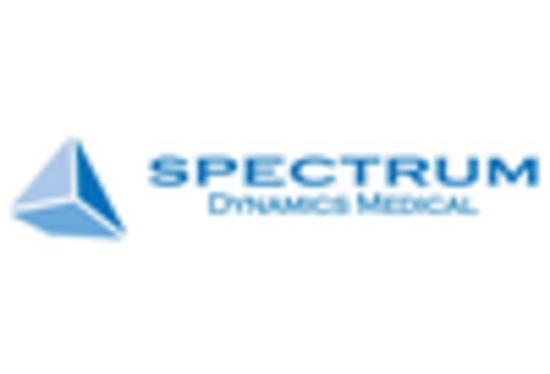Increased Adoption of Telemedicine
The Mobile Gamma Camera Market is witnessing increased adoption of telemedicine, which is reshaping the landscape of healthcare delivery. As telemedicine becomes more prevalent, the need for portable diagnostic tools that can be used in conjunction with remote consultations is growing. Mobile gamma cameras facilitate this integration by allowing healthcare professionals to conduct imaging studies in patients' homes or in remote clinics. This capability enhances patient convenience and expands the reach of healthcare services. The market is likely to see a boost as telemedicine continues to gain traction, with projections indicating that telehealth services could grow by over 25% in the coming years, further driving the demand for mobile imaging solutions.
Technological Innovations in Imaging
The Mobile Gamma Camera Market is experiencing a surge in technological innovations that enhance imaging capabilities. Advanced detector technologies, such as semiconductor-based detectors, are being integrated into mobile gamma cameras, improving sensitivity and resolution. This evolution allows for more accurate diagnostics and better patient outcomes. Furthermore, the incorporation of artificial intelligence in image processing is streamlining workflows and reducing interpretation errors. As a result, the market is projected to grow at a compound annual growth rate of approximately 8% over the next five years, driven by these advancements. The ability to provide high-quality imaging in a portable format is appealing to healthcare providers, thereby expanding the market's reach.
Rising Prevalence of Chronic Diseases
The Mobile Gamma Camera Market is significantly influenced by the rising prevalence of chronic diseases, such as cancer and cardiovascular disorders. As these conditions become more common, the demand for effective diagnostic tools increases. Mobile gamma cameras offer a non-invasive method for detecting and monitoring these diseases, making them invaluable in clinical settings. According to recent statistics, the incidence of cancer is expected to rise by 30% in the next decade, which could lead to a corresponding increase in the demand for mobile imaging solutions. This trend suggests that healthcare facilities are likely to invest more in mobile gamma cameras to enhance their diagnostic capabilities and improve patient care.
Growing Focus on Cost-Effective Healthcare Solutions
The Mobile Gamma Camera Market is also driven by a growing focus on cost-effective healthcare solutions. As healthcare costs continue to rise, there is an increasing need for diagnostic tools that provide high-quality results without incurring excessive expenses. Mobile gamma cameras offer a cost-efficient alternative to traditional imaging methods, as they require less infrastructure and can be deployed in various settings, including remote locations. This flexibility not only reduces operational costs but also improves access to diagnostic services for underserved populations. The market is expected to benefit from this trend, as healthcare providers seek to optimize their budgets while maintaining high standards of care.
Regulatory Support for Advanced Imaging Technologies
The Mobile Gamma Camera Market benefits from regulatory support aimed at promoting advanced imaging technologies. Governments and health organizations are increasingly recognizing the importance of innovative diagnostic tools in improving healthcare outcomes. Initiatives to streamline the approval process for new imaging devices are encouraging manufacturers to invest in research and development. This regulatory environment fosters innovation and enhances the availability of mobile gamma cameras in the market. As a result, the industry is likely to experience accelerated growth, with new products entering the market that meet evolving healthcare needs. The supportive regulatory framework is expected to play a crucial role in shaping the future of the mobile gamma camera market.


















Leave a Comment